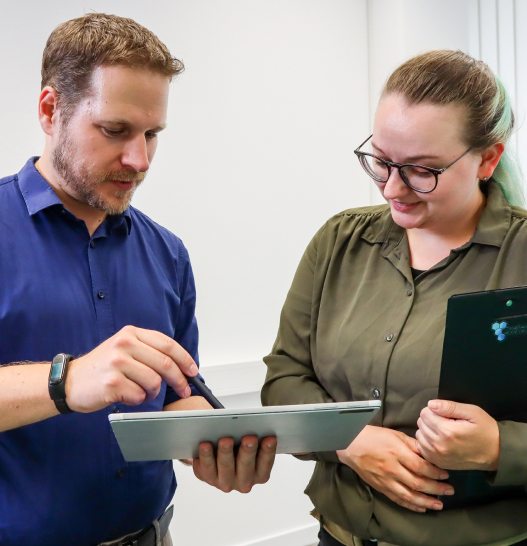What are the requirements for your medical device to use the User Interface of Unknown Provenance process? What are the different cases in which the process can be used?
We clarify these questions in our article. In addition, we have prefaced you with some important basic facts that you need to understand.
Basic Knowledge: User Interface of Unknown Provenance:
Before we get to the main question of this article, we would like to briefly give you some important basics to understand:
- The process is abbreviated UOUP
- The UOUP process is an abbreviated alternative to the usability engineering process according to IEC 62366-1
- The UOUP process relies on using existing documentation (PMS data, risk management data) to demonstrate compliance to IEC 62366-1 for your user interface or parts of the user interface of unknown provenance (without having to go through the full usability engineering process).
- The goal is to create a condensed usability engineering file and a risk management file that “identifies risks caused by usability problems of the user intrface.”. (Source: IEC 62366-1:2021-08; C.1).
- You can find the UOUP process in Annex C of IEC 62366-1. The entire usability engineering process can be found under points 5.1 to 5.9 of the standard.
Basics: When exactly is a user interface considered to be of unknown provenance?
To address the question “When can I use the User Interface of Unknown Provenance process?” we first need to look at how exactly a User Interface of Unknown Provenance is defined and what the process is for.
IEC 62366-1:2021 provides the following definition:
„User interface or part of a user interface of a medical device previously developed for which adequate records of the usability engineering process of this standard are not available“. (Source: IEC 62366-1:2021-08; 3.15)
Furthermore, the standard specifies the following regarding the UOUP process: „This annex was created in recognition of the fact that many manufacturers will be interested
in applying the tools defined in this standard to user interfaces or parts of user interfaces that have already been commercialized prior to the publication of this edition of this standard.“. (Source: IEC 62366-1:2021-08; C.1). This therefore concerns medical devices that were developed before the introduction of IEC 62366-1 2015 and therefore cannot have suitable records in accordance with the standard.
A user interface is therefore of unknown provenance with regard to the usability engineering process according to IEC 62366-1 if
- It was developed and approved before the introduction of the 2015 standard
- It was approved without appropriate records according to IEC 62366-1
In addition, a part of a user interface may not have been developed as a medical device and still be part of the user interface. An example of this would be a computer mouse. Since such a part of a user interface does not have suitable records according to IEC 62366-1, it is also of unknown provenance with regard to the usability engineering process according to IEC 62366-1.
When does a user interface lose its “unknown provenance” status?
Subclause C.1 of IEC 62366-1 specifies how to deal with user interfaces of unknown provenance that are to be subject to modification or partial modification: „ if any modifications are made to the user interface or its parts, only the unchanged parts of the user interface remain UOUP and the changed parts of the user interface are subject to 5.1 to 5.8.“ (Source: IEC 62366-1:2021-08; C.1). 5.1 through 5.8 are the subsections of the standard that describe the entire usability engineering process.
Who can use the UOUP process? IEC 62366-1 gives examples:
To help you understand when the User Interface of Unknown Provenance process can be applied, four examples are provided in the introduction to Appendix C of IEC 62366-1. Each of these examples deals with a case where the process can be used.
You can find the examples in Section C.1. Four different cases are covered, but they all have a consensus: All parts of a user interface that are changed and all parts of a user interface that are directly affected by these changes are no longer considered to be “of unknown provenance” and therefore must go through the entire usability engineering process.
According to the examples, a user interface that was approved before the standard was introduced and remains unchanged can go through the User Interface of Unknown Provenance process to show that the usability requirements of the standard are met for the product.
The standard also mentions the following cases in which parts of an existing user interface are changed:
- If an existing user interface is subsequently changed, all parts that are subject to change must go through the complete usability engineering process. Unchanged parts can go through the UOUP process.
- If an existing user interface gets a new software function, all parts that are affected by this new function have to go through the complete usability engineering process. All unaffected parts can be evaluated through the UOUP process.
- If a universally applicable component is added to an existing user interface, on which the user interface depends, all parts of the user interface that are affected by this integration must go through the complete usability engineering process. The unchanged parts, on the other hand, may be evaluated with the UOUP process.
(The specific examples can be found in: IEC 62366-1:2021-08; Annex C, C.1)
Conclusion
To go through the UOUP process, a user interface or parts of a user interface must be of unknown provenance. This means that it has been approved to IEC 62366-1 without appropriate records (in the most common cases, because a product was launched before the standard was introduced). A user interface loses the status of unknown provenance if it is modified or affected by changes to other parts of the product.
Do you want to know if and how you can apply the User Interface of Unknown Provenance process? What is your specific case? Comment on this post or get in touch via our contact form. We look forward to hearing from you.
Are you interested in the topic “IEC 62366-1 and medical devices”?
Here you can find more articles about the topic:
- For a deeper look into the UOUP process, check out our article “Deep Dive: User Interface of Unknown Provenance“. Here we go through each step of the process with you and explain what is expected of you and how you can meet these expectations.
- The article “Deep Dive: MDR and Usability” shows you all the requirements of the MDR for the usability of your medical device. In addition, the respective passages show how the usability engineering process according to IEC 62366-1 comes into play.
- We have explained the usability engineering process according to IEC 62366-1 step by step in our article “Usability Engineering for Medical Devices according to IEC 62366-1“. Here you will find not only the complete process, but also valuable tips for implementation.




0 Comments